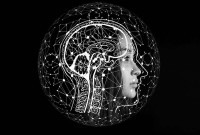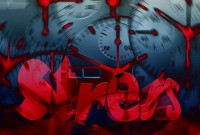- Home
- Business Processes
- Industry Knowledge
- Aerospace Industry
- Automotive Industry
- Banking Domain
- BFSI Industry
- Consumer/ FMCG Industry
- Chemicals Industry
- Engineering & Construction
- Energy Industry
- Education Domain
- Finance Domain
- Hospitality Domain
- Healthcare Industry
- Insurance Domain
- Retail Industry
- Travel and Tourism Domain
- Telecom Industry
- Leadership Skills
- eLearning
- Home
- Leadership Skills
- Team Leadership
- Defining Team and Teamwork
Defining Team and Teamwork
Teams are part of the modern organizational culture. Whether you are a team leader or a team member, having a better understanding of how teams work, and being able to identify where the team is in the process, is a critical part of ensuring the team is ultimately successful. Start with the basics and understand what a team is and what role they play in an organization.
Why We Need Teams?
If you visit an organization, you will find that most of the activities of the organization are performed by a group of persons. Most of the work in organizations is done in teams. In an organization, activities are arranged in such a way that requires collective contribution. In fact, new organizations can be described as composed of teams.
In modern organizations, individuals are required to work in different types of teams. Even though individuals are important, their effectiveness depends, to a large extent, on the teams of which they are members. Every individual contributes to the achievement of a common goal. The individuals interact, collaborate, coordinate, and influence among the members. Thus, most of the time individuals work in a team.
Difference Between Groups and Teams:
A team consists of individuals. However, the collection of individuals in a place may be only a crowd. When individuals come together for certain tasks, then we have the formation of a group. A group is not necessarily a team. A group can have individuals with varied interests, attitude as well as thought processes. It is not necessary that the group members would have a common objective or a common goal to achieve. Let’s define these terms.
What is a Group?
The main function of a group is to exchange task-related information and discuss task-related issues. The accountability in the group Building Roles and Teams remains of the individual. Each individual brings his/her competencies as well as the relevant information related to the task. Thus the group can be defined as a collection of individuals working in face-to-face relationships to share information and resources for a task to be achieved.
Group V/s Team:
The team is qualitatively different from the group in several ways. The team functions almost like an individual. In other words, the team is accountable for results; collective responsibility is taken. There is mutuality and complementarity of the members of the team. The most important characteristics of a team are that it creates synergy, i.e., the performance of the team is more than the collective performance of the individual members. Hence, A team can be defined as a group of individuals working in a face-to-face relationship for a common goal, having collective accountability for the outcome of its effort.
Difference between Groups and Teams:
|
Attribute |
Group / Work-Group |
Team |
|
Purpose |
Same as that of Organization |
Teams could be created for a specific purpose, distinct from that of the organization |
|
Work Products |
Individual |
Collective |
|
Process |
Discuss, decide, delegate |
Discuss, decide, do |
|
Leadership |
A single leader |
Shared Leadership |
|
Meeting |
Efficient |
Open, Problem Solving |
|
Accountability |
Individual |
Individual and Mutual |
|
Performance |
Performance typically depends on the work of individual members. |
Performance depends on both individual contributions and collective work products- the joint outcome of team members working together |
|
Responsibility |
Members of groups do not take responsibility for any results other than their own, although they do pool their resources to attain a goal |
Each team member shares responsibility for the team outcome. |
|
Goal |
Groups share a common interest goal |
Teams share a common interest goal plus a common commitment to purpose which supplies a source of meaning and emotional energy to the activities performed. |
|
Evaluation |
Indirect (Eg. Financial) |
Direct (Collective Work Product) |
Definition - What is a Team?
A team may be defined as a group of two or more people who interact and influence the members for the achievement of a common goal. A team is a group of individuals, all working together for a common purpose. The individuals comprising a team ideally should have common goals; common objectives and they should be compatible with each other.
"A team is a small number of people with complementary skills who are committed to a common purpose, performance goals, and approach for which they are mutually accountable." - Katzenbach and Smith, 1993
“A team is groups of two or more people who interact and influence each other, are mutually accountable for achieving common objectives, and perceive themselves as a social entity within an organization.” - Steven and Mary Ann Von
A team is defined as a reasonably small group of people, who:
- Are committed to a common purpose
- Hold themselves mutually accountable for achieving a clear and identifiable set of goals
- Mayor may not have complementary skills
Characteristics of a Team:
Based on this definition given above, the characteristics of the teams may be elaborated as under:
- A group of two or more persons
- Having regular interactions among members
- Ability to influence the behavior of team members
- Members are mutually accountable
- Members are interdependent
- They together form a social entity
- Work towards the achievement of common goal Each member’s contribution is as important as any other member’s contribution
- Congruence between the achievement of individual goals and that of the team goal
The frequency of interactions, influence, and the nature of tasks may determine the formation of a group, i.e., long-term, short-term, formal, informal, etc. Many new managers and supervisors reading this article will be taking over the management of an existing team rather than bringing together a new one. However, understanding these basics will help you put together your ideal team if you had the opportunity. This will help you fully understand the issues you may face.
Each individual is a contributor and brings a set of skills and knowledge to the organization. When we bring those individuals together, there is a wider range of skills and experience, and as a leader, you are able to come up with even better solutions.
Related Links
You May Also Like
-
Have you ever noticed how we express ourselves or interact with each other? Have you ever wondered what communication is and what role it plays in our lives? One may wonder if communication is so omnipresent and integral to our lives, why study communication at all? We need to study communication because it is a complex process that consists of many elements and is also beset with a number of barriers and there is a need to remove the barriers so that the communication process is effective.
-
Reasons behind Wastage of Time
Under-utilization of time may be due to the faulty system or faults of manager/officer/leader or due to lack of planning. There could be many factors driving the procrastination behavior like system issues, personal work habits, and lack of delegation, personality traits, and bad working habits of the leader, failure to tackle interpersonal conflicts, obstacles, and lack of far-sightedness.
-
Team leadership theory is a recent leadership theory that does not discriminate between the leader and the other team members. The approach considers contributions from each team member to be critical for organizational success. This approach focused on the overall team effectiveness and team problems are diagnosed and action is taken to remediate weakness. This approach provides for taking corrective action when the leader deems necessary.
-
This style is characterized by leaders making decisions for others and expecting followers to follow instructions. The directive leader is adept at giving instructions, setting expectations, and establishing timelines and performance standards. However, it is possible for the same leaders to display both directive and supportive behavior as per the demands of the situation.
-
“Level 5 Leadership”, this term was coined by Jim Collins in his book “Good to Great” and it is all about achieving "Greatness" as a leader. This article will explain what we mean by Level 5 Leadership and what the characteristics of a Level 5 leader are. What it takes to achieve greatness as a leader, and what are the steps and strategies that one can use to move up to this top level of leadership.
-
Tips for Effective Time Management
After studying and analyzing how time is spent, why time is wasted, and where time is wasted you need to decide about the changes required for effective utilization of time. For this purpose, a large number of remedial measures can be taken by you. The first and foremost determinant of a planned and purposeful utilization of time is to develop consciousness of the value of time at all levels of the organization. Planning, goal setting, and defining priorities are concerns to addressed immediately.
-
Share Information with Your Team
Willingness to share information is the most critical and the very first step in the Journey to employee empowerment and team development. People cannot make good technology or business decisions without information. They need to understand the purpose behind what they are doing and connect with the big picture. People with information feel the need to take the risk of making decisions that enable business growth.
-
Participative leadership is one of the most effective styles and creates higher productivity, better contributions from group members, and increased group morale. The democratic leadership style consists of the leader sharing the decision-making abilities with group members by promoting the interests of the group members. Learn more about this leadership style and situations when it is effective.
-
Stress is an essential part of our life. No one can live without stress. Stress can be beneficial as well as harmful. Stress as a positive influence adds excitement and hope while as a negative influence it can result in destructive feelings, anger, and depression. Although the general orientation to stress is to consider unfavorable outcomes, yet one must have observed that stress experiences may also facilitate the development of effective and varied coping behavior, increased personal resources, and lead to a sense of competence in development. Stress at a moderate level is not only inevitable but may be useful for physical and mental well-being.
-
Building Perfect Creative Team
One misconception around creativity is that creative act is essentially solitary. Most of the world's important inventions resulted not from the work of one lone genius, but from collaboration of a team with complementary skills. Managers should build teams with the ideal mix of traits to form a creative group and then establish the conditions that make creativity much more likely to occur.
Explore Our Free Training Articles or
Sign Up to Start With Our eLearning Courses

About Us
Learning
© 2023 TechnoFunc, All Rights Reserved










